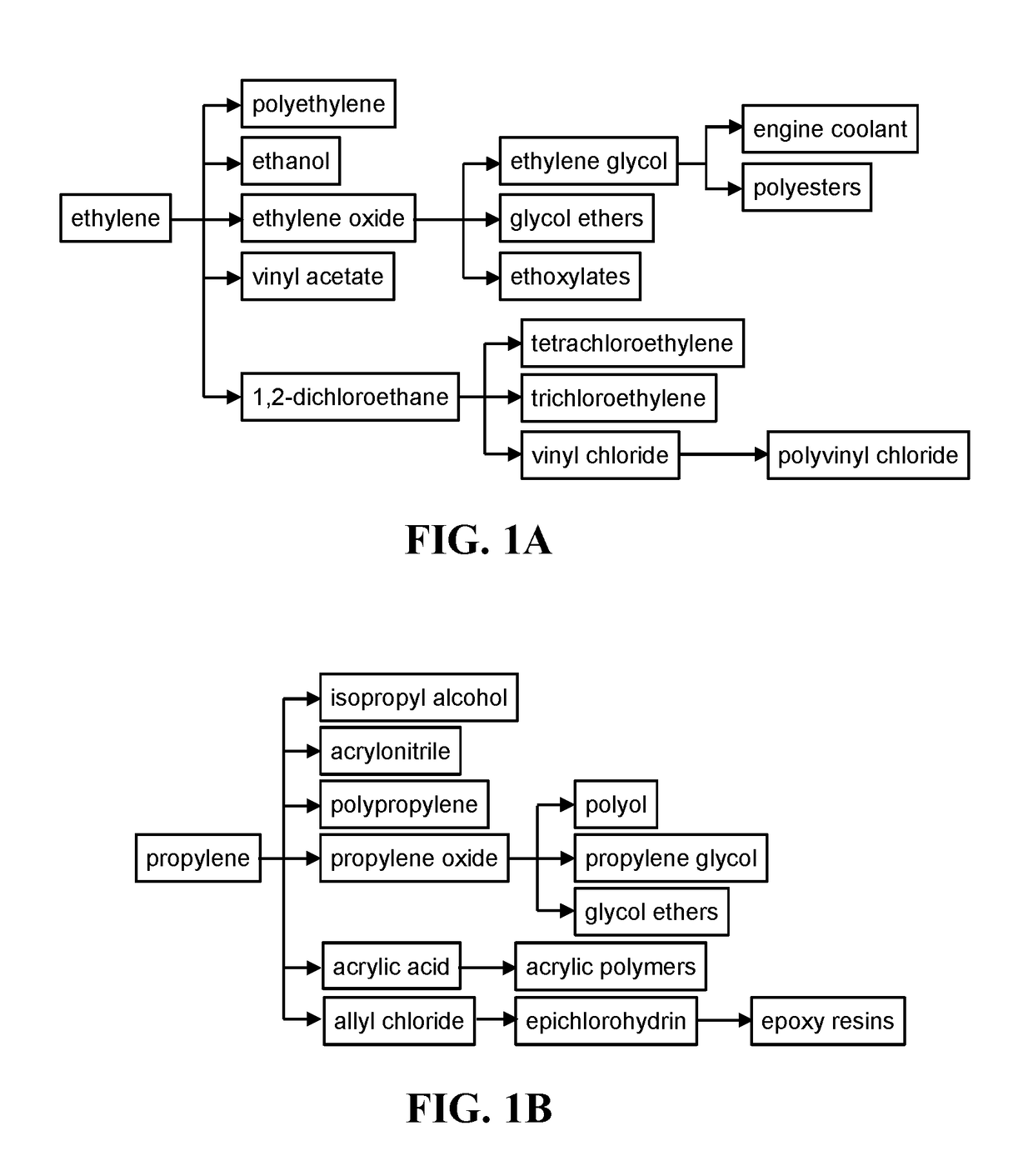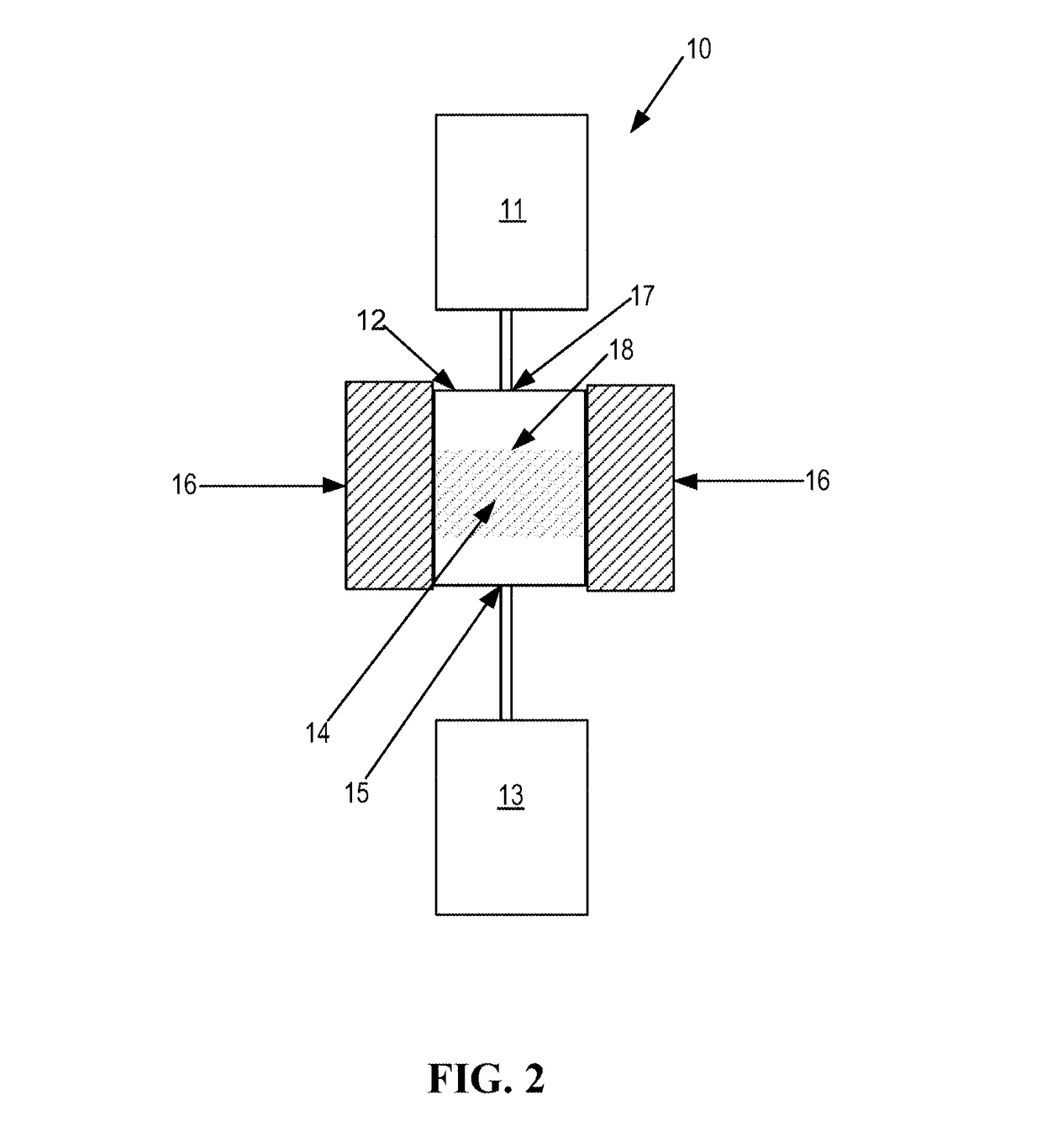SSZ-13 as a catalyst for conversion of chloromethane to olefins
a technology of aluminosilicate zeolitic catalyst and chloromethane, which is applied in the direction of molecular sieve catalyst, molecular sieve catalyst, hydrocarbon preparation, etc., can solve the problems of increasing the manufacturing cost associated with ethylene and propylene production, oxidized compounds can be formed, and requiring large amounts of naphtha, so as to achieve the effect of increasing the acid site strength, increasing the activeness, and increasing the strength of the aluminosilica
- Summary
- Abstract
- Description
- Claims
- Application Information
AI Technical Summary
Benefits of technology
Problems solved by technology
Method used
Image
Examples
example 1
Catalyst Preparation
[0054]SSZ-13 catalysts having the gel composition: Si:K:R:H2O:Al2 of 102:9:28:870:1 was synthesized in the following manner. N,N,N, trimethyl-1-adamantylammonium hydroxide (41.34 g, 25%) was mixed with KOH (0.97 g). Aluminum sulfate octadecahydrate (1.16 g, 98%) was added to the mixture while stirring. De-ionized water (80.3 g) was also added in order to dilute the mixture. Colloidal silica, (Ludox AS-40, 26.28 g, 40% Sigma-Aldrich®) was, then added to the mixture while stirring and the resulting mixture was allowed to keep stirring for an additional 45 minutes. The resulting gel was loaded into a Teflon lined autoclave and heated to 160° C. for 5 days under stirring (60 rpm). After crystallization was complete, the product was filtered and washed with 3 L of de-ionized water and then dried overnight (90° C.). The zeolite powder was calcined at 550° C. for 7 hours and then analyzed by powder x-ray diffraction to confirm the CHA structure.
example 2
Catalyst Acidity Characterization
[0055]The acidity of SSZ-13 and SAPO-34 were each measured using ammonia-temperature programmed desorption analysis using 5% NH3 in He at a flow rate of 50 cc / min for calibration and a measure flow rate of 50.04 cm3 STP / min. Tables 1 and 2 provide the peak numbers, temperature (C.°) at maximum peak height, quantity (cm3 / g STP), and peak concentrations in percent for SSZ-13 and SAPO-34, respectively.
[0056]
TABLE 1(SSZ-13)TemperatureQuantityPeak ConcentrationPeak Numberat Maximum (° C.)(cm3 / g STP)(%)1176.533.380.182441.066.710.12
[0057]
TABLE 2(SAPO-34)TemperatureQuantityPeak ConcentrationPeak Numberat Maximum (° C.)(cm3 / g STP)(%)1173.848.670.442371.3920.250.50
example 3
Methyl Chloride Conversion to Olefins at 450° C., and 0 MPa
[0058]Each of the SSZ-13 Catalysts A and B of the present invention and the comparative catalyst SAPO-34 were tested for chloromethane conversion by using a fixed-bed tubular reactor at about 450° C. for a period of about 10 h or longer. For catalytic tests, the powder catalyst was pressed and then crushed and sized between 20 and 40 mesh screens. In each test a fresh load of sized (20-40 mesh) catalyst (1.0 g) was loaded in a stainless steel tubular (½-inch outer diameter) reactor. The catalyst was dried at 200° C. under N2 flow (100 cm3 / min) for an hour and then temperature was raised to 450° C. at which time N2 was replaced by methyl chloride feed (90 cm3 / min) containing 20 mol % CH3Cl in N2. The weight hourly space velocity (WHSV) of CH3Cl was about 0.8 h−1 to 3.0 h−1 and reactor inlet pressure was about 0 MPa. The SAR, percent CH3Cl conversion, turn over frequency (TOF), C2 percent selectivity, C3 percent selectivity of...
PUM
| Property | Measurement | Unit |
|---|---|---|
| wt. % | aaaaa | aaaaa |
| pressure | aaaaa | aaaaa |
| temperature | aaaaa | aaaaa |
Abstract
Description
Claims
Application Information
 Login to View More
Login to View More - R&D
- Intellectual Property
- Life Sciences
- Materials
- Tech Scout
- Unparalleled Data Quality
- Higher Quality Content
- 60% Fewer Hallucinations
Browse by: Latest US Patents, China's latest patents, Technical Efficacy Thesaurus, Application Domain, Technology Topic, Popular Technical Reports.
© 2025 PatSnap. All rights reserved.Legal|Privacy policy|Modern Slavery Act Transparency Statement|Sitemap|About US| Contact US: help@patsnap.com



